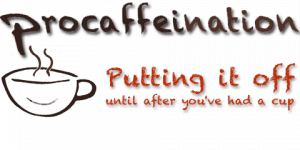
There are a great many terms that get bandied about when talking about roasted coffee. Many are specific to particular countries and some are even tied directly to geographical regions of the United States. So how can we mere mortals make sense of all these terms? How can we tell the difference between an American roast and a Vienna roast? And what effect do the different roasts have on the flavor of the cup in front of us?
Well, you are in luck. While I am not a roasting expert – I’m just a smart aleck who likes coffee – I do have a little experience. I will help you wade through all the roasts, both by name, definition, and degree of roast. I’ll even throw in some of the taste characteristics you can expect from coffee roasted to those specifications.
But I Don’t Know About Roasting
To be clear, I am not going to talk about heat application profiles, ambient air temperatures, or even relative humidity. Those are subjects for people far more skilled than I. For this article, I am just going to give you the definitions of the roasts and highlight some of the characteristics you can expect from them. So, enjoy this nice, user-friendly guide to the various coffee roasts you may come in contact with as you make your way on your caffeine journey.
Why Do We Roast Coffee?
What we think of as a “coffee bean” is actually the seed of the fruit of the coffee plant. It takes quite a bit of effort, but the coffee producers and processors remove the fruit, dry the seeds, and remove the seed coats. What we are left with is called “green coffee.” If you are curious for more about what a coffee bean actually is, follow the link for a quick primer.
Green coffee has many good qualities and its extracts have been promoted widely as being particularly beneficial to our health. However, they do not taste like much of anything. If you have ever had a raw sunflower seed, you have a vague idea of the taste of a green coffee bean. It takes heat (and quite a bit of it) to bring out the flavors we associate with our morning cup of magic bean juice.
What Happens During the Roasting Process?
Coffee roasting is part science and part art. I am not good enough to give you the art, so here is what happens by the numbers. Although I have included temperatures for reference, there is some variation based on the type of coffee, altitude, etc. In any case, room temperature green beans are popped into the roaster and the heating of the beans begins.
Endothermic Phase
The first part of roasting is the heat going INTO the beans – that’s the endothermic process. The beans rise in temperature and the moisture in them begins to evaporate. As the beans reach a temperature of about 345ºF (174ºC) they start turning brown and a “toasty” odor can be smelled.
The temperature continues to rise and at 370ºF (188ºC) the beans are noticeably browner and have begun to expand. From here to the “first crack” is where all the very light roasts can be found.
As the temperature of the beans continues to rise, the coffee continues to darken. This is caused in part by reactions from the sugars inside the beans but is largely due to the Maillard Reaction. You may have heard of this; it is the same thing that causes the browning in meats. When we get to 400ºF (204ºC) we are positioned right before the first crack.
Exothermic Phase – First Crack Begins
At this point, the very first popping sounds, similar to popcorn popping, of the first crack can be heard. The individual beans are expanding, eventually doubling in size, and the internal chemical reactions inside the beans are actually generating their own heat in an exothermic process. When the cracking stops, if you were to stop the roast and cool the beans, you would have achieved a City Roast.
Second Endothermic Phase
The beans are now absorbing heat again. The beans are becoming more uniform in color and the cellulose matrix of the bean is beginning to fracture, leading to the “second crack.” The bean temperature is now approaching 444ºF (229ºC). If you were to stop your roast here it would be a Full City Roast.
Second Crack
The bean temperature continues to rise and at 446ºF (230ºC) you start hearing the snapping caused by the fracturing cellulose matrix. This is, in fact, different from the popping sound heard in the first crack. At this point, you are entering the “Dark Roasts” and the point where the roast characteristics will start to factor in more highly than the origin characteristics.
Getting Darker
By the time you reach 465ºF (241ºC), you are in the Vienna Roast range. The beans are getting darker. Beyond this, the roast takes over completely: the sugars are heavily caramelized and burnt, the internal cellulose of the bean starts to carbonize, and the bean itself expands. The second crack is now quite rapid and nearing its end. The temperature is at 474ºF (246ºC) and you have attained a French Roast. Keep going to 486ºF (252ºC) and you are at what is known as Italian Roast. Go much farther and you have a roaster full of charcoal and if you are not careful, a fire.
For a pretty great discussion on roasting, check out this page at Sweet Maria’s.
Which Roast is Best?
That is just about the most subjective question that could possibly be asked and quite a few parameters need to be taken into account do give a meaningful answer. For example, the World Coffee Research Sensory Lexicon contains 110 attributes used in the evaluation of coffee, and that doesn’t even take “roast” into account!
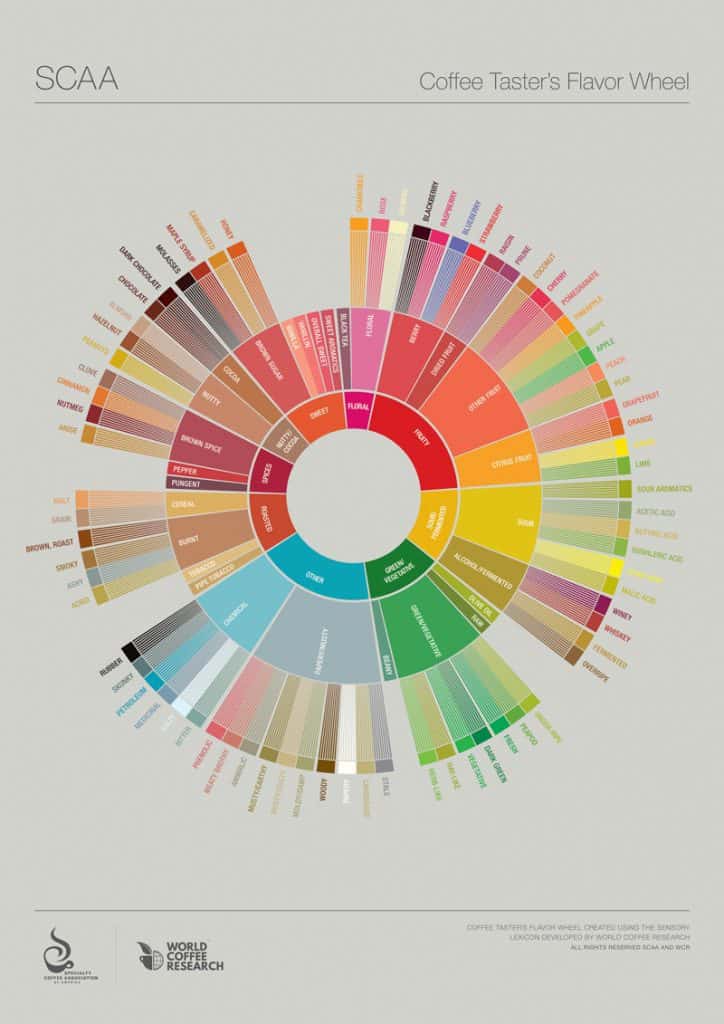
It might be worth noting that for real cuppings and taste evaluations, coffee is always roasted to about American Roast levels so the roast characteristics will not come into play.
The upshot is, everyone’s tastes are different. Do you like a cup with more acidity? Go for a lighter roast. Do you like good body? Go darker, but not too dark; the darker you go, the thinner-bodied you get. Want to taste “chocolates?” Think the Full City/Vienna range. Of course, all this depends on where a particular coffee tastes best. In short, whichever one you like the best is the one that is best for you.
About the Guide
If you are just a regular coffee lover, then Light, Medium, and Dark is probably all the detail you really need. Your preference is probably driven by the coffee you have “always drunk.” That’s fine, and as long as you are enjoying your coffee, pay no attention to anyone who tries to tell you otherwise.
However, those terms can be seen to be rather vague. The traditional, quantified roasts, which I have highlighted in GREEN can give more discerning taste buds a more curated experience.
Traditional Roasting Levels From Lightest to Darkest
Cinnamon Roast
New England Roast
American Roast
City Roast
Full City Roast
Vienna Roast
French Roast
Italian Roast
Over the years, some vague roast terms have crept into the vernacular. There is nothing really wrong with them, but we already had some vague terms floating around. In any case, I have included them to help you in your quest for the perfect cup.
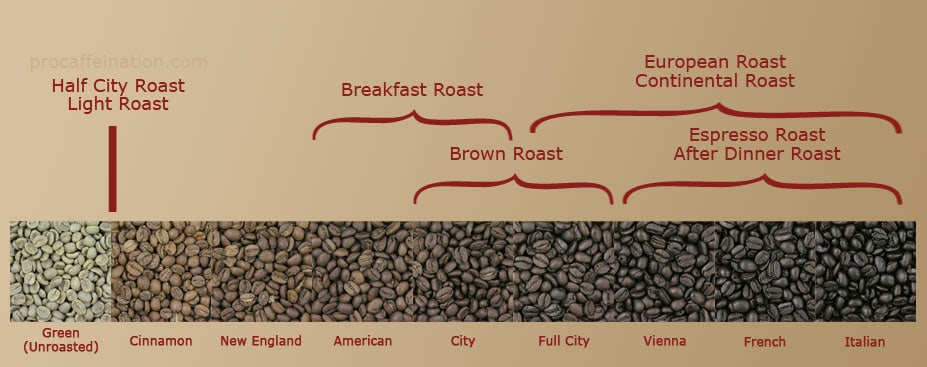
After-Dinner Roast
This is a vague term for coffee that has been roasted anywhere between Vienna Roast and Italian Roast. Generally, low acid so that it plays well with dessert.
American Roast
This is the official name for coffee roasted to 410°F (210°C). It is also the traditional taste you can expect in any east coast American coffee shop or restaurant. In short, medium brown in color, slightly muted acidity, and a decent display of the origin characteristics. Here are some roastycoffee.com reviews of some popular medium roasted coffees.
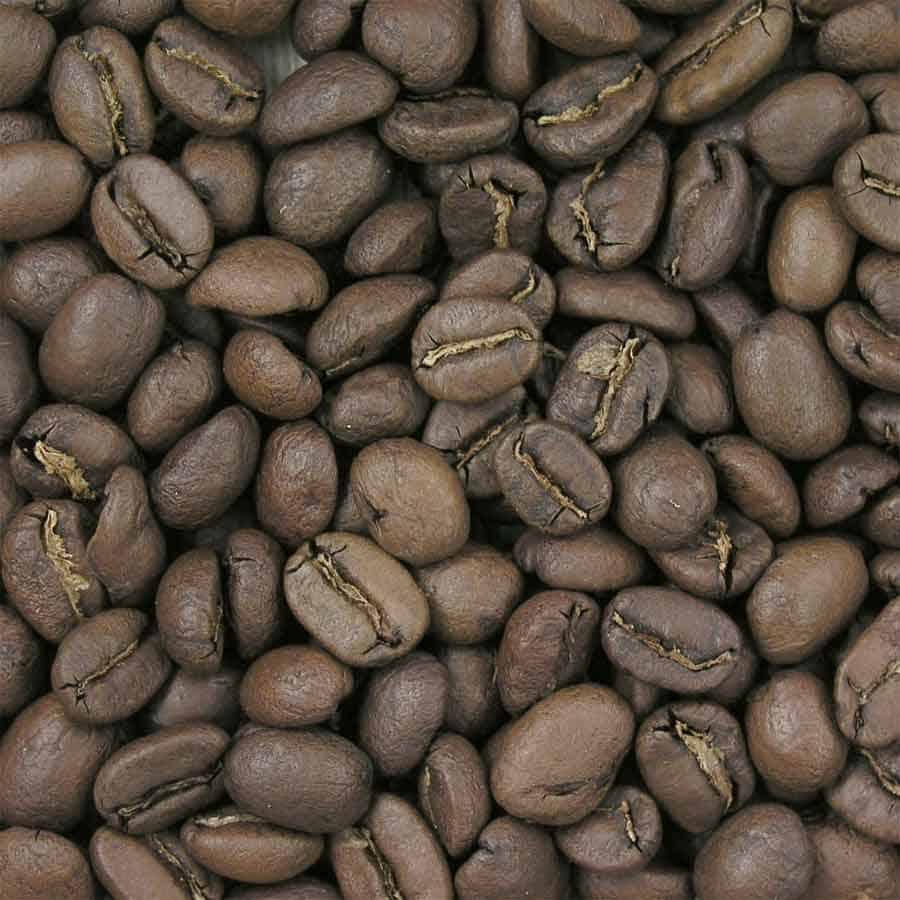
Blonde Roast
This is an alternate term for Cinnamon Roast that cafés use so as not to confuse consumers who might think it has to do with the flavor cinnamon. Starbucks made it a popular roast term, although their Blonde Roast is more like a City Roast. I guess that makes a certain sort of sense if you are of the opinion that their regular coffees are over-roasted, too.
Breakfast Roast
This is a vague term for coffee roasted anywhere from American Roast to City Roast.
Brown Roast
This is a vague term for coffee roasted anywhere from City Roast to Full City Roast.
Cinnamon Roast
Also known as Light Roast. Officially, it is coffee roasted to 385°F (196°C). Lighter in color than the traditional American roast, it has a toasted grain-like taste, with a sharp acidity, and little sweetness. Some describe it as “grassy.” Roasters achieve this by taking the coffee to just before the “first crack.”
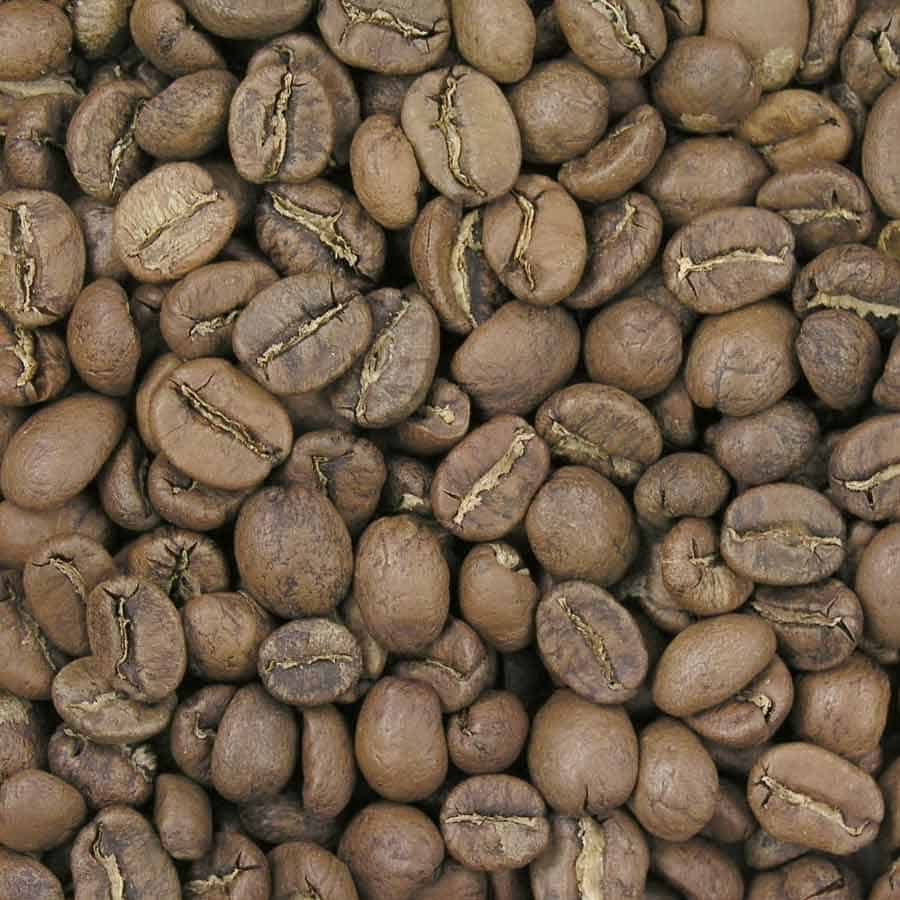
City Roast
This represents coffee that has been roasted to 426°F (219°C). It is darker than the traditional American Roast and tends to be smooth in taste, with less acidity. In my opinion, this is just before the roast characteristics start to kick in, so you are primarily getting the flavor of the coffee, not of the roast. It is also sometimes known as Medium Roast and is the degree to which most specialty coffees are roasted.
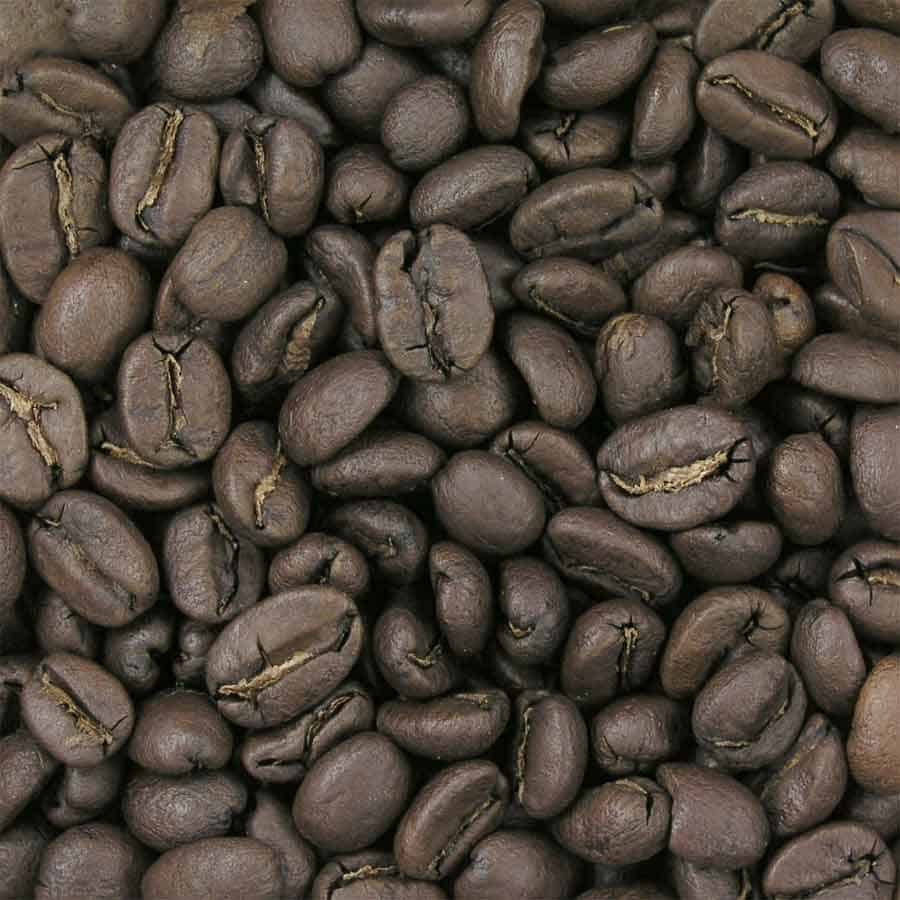
Continental Roast
This is a vague term for coffee roasted anywhere between Full City Roast and Spanish Roast. A glance at the chart shows that this is a rather large range.
Dark French Roast
Coffee roasted beyond that of French Roast will become almost black with a shiny surface. The resulting brew is often thin-bodied, and bittersweet in flavor, with an overlay of burned or charcoal-like tones.
Dark Roast
Another vague term. This time it can describe any roasted coffee that is darker than the traditional American norm. That means City, Vienna, French, Italian, or Turkish Roast all fall into this same, broad category.
Espresso Roast
This is a vague term for coffees that have been roasted anywhere between Vienna Roast and Spanish Roast. It is important to note that espresso does not have to be made with very darkly roasted coffee. Espresso is culturally Italian – but don’t tell that to the French or the Spanish! – and Italians also have traditionally favored darker roasted coffee. Those two points have led us to believe that only dark roasts can be used in espresso. I am here to tell you that that is not the case. What you want in a good espresso is a delicious crema. That has more to do with the sugars and oils in the coffee than the darkness of the roast.
Northern Italian style espresso is usually roasted to 440 – 446 internal bean temperature, which would make it in line with a Full City+ or Vienna Roast. In southern Italy, a Light French Roast is generally used.
European Roast
Much like Continental Roast, this is a vague term for coffee roasted anywhere between Full City Roast and Spanish Roast.
French Roast
This is the precise term for coffee roasted to 464°F (240°C). It is darker than the traditional American Roast and will likely be very shiny with oils. The taste is almost entirely due to the quality of the roast and may range in taste anywhere from rich and bittersweet to thin-bodied and burned.
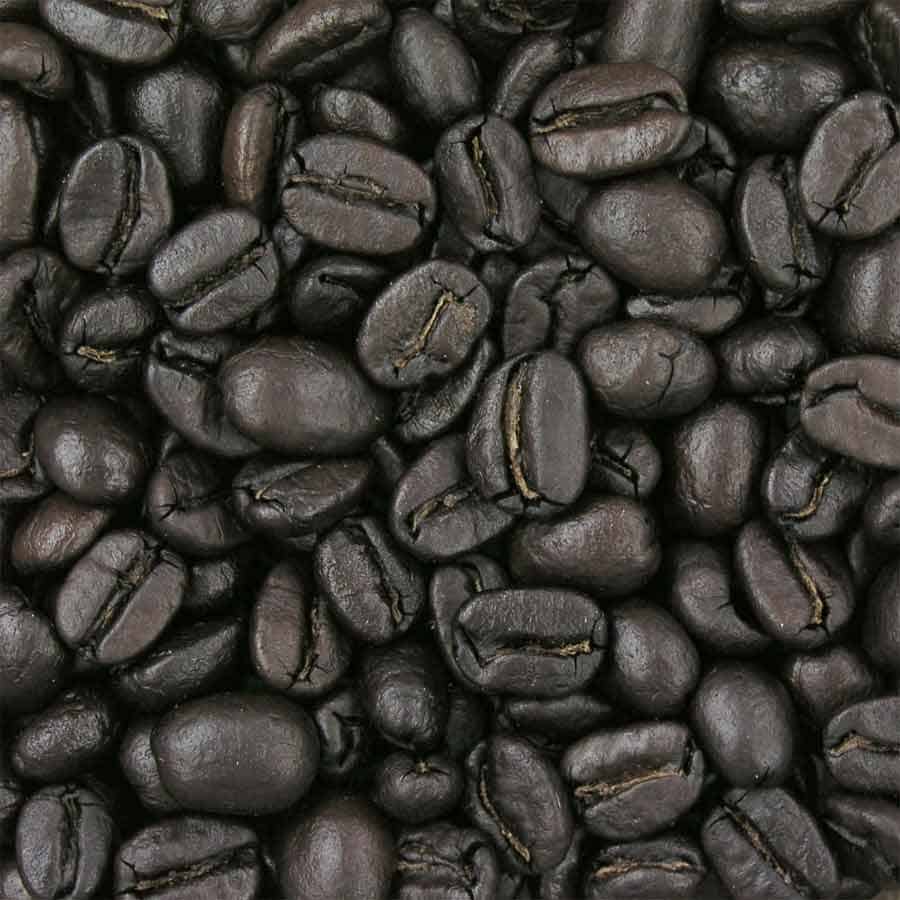
Full City Roast
By definition, this is coffee roasted to 437°F (225°C) and is right at the “second crack.” It is a bit darker than the traditional American Roast and may have tiny droplets of oil on the beans. This roast is often smooth in taste, with less acidity. In my opinion, this is just as the roast characteristics start to kick in, so you might be losing some of the distinctive taste characteristics of the coffee. On the plus side, you are starting to get a full display of the artistry of the person doing the roasting. This roast is also sometimes known as “medium+.”
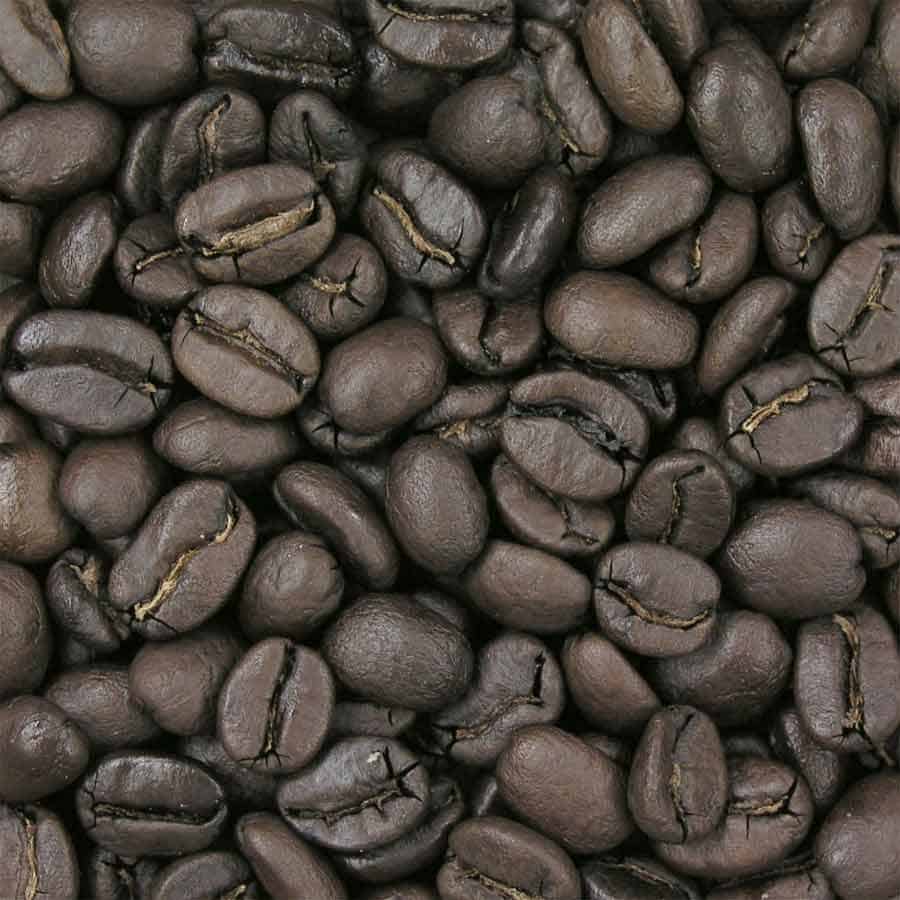
Half City Roast
This is a vague term for very lightly roasted coffees. Somewhere between the browning phase and the Cinnamon Roast area.
High Roast
This is a vague term for coffee roasted somewhere in the Full City to Vienna Roast range.
Italian Roast
Coffee roasted to 473°F (245°C). The resulting coffee is much darker than the traditional American Roast and is, in fact, darker than French Roast. It may even be burnt. The resulting cup is usually bittersweet in flavor, with an overlay of burned and charcoal-like tones. Additionally, it is often thin-bodied which blenders try to mediate by mixing in robusta beans to add extra body. Because Italians invented espresso, it is also sometimes known as Espresso Roast.
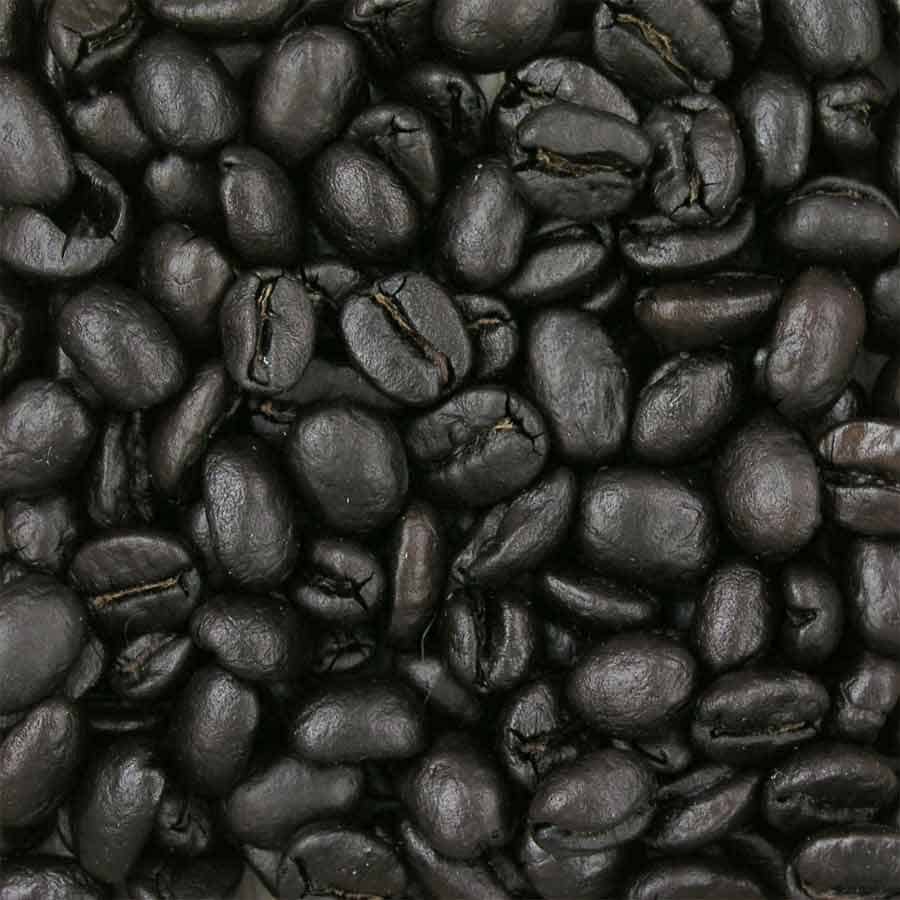
Light City Roast
This is a vague term for very lightly roasted coffees. Somewhere between the browning phase and the Cinnamon Roast area.
Light Espresso Roast
A vague term for a roast anywhere between City Roast and French Roast. Remember, espresso does not have to be made with burnt coffee. Sorry… I mean dark roasted coffee.
Light Roast
This is a vague term for very lightly roasted coffees falling somewhere in the Cinnamon Roast to American Roast range.
Neapolitan Roast
This is an alternate term for coffee brought to a Dark Roast but not quite black; see Italian roast.
New England Roast
Coffee roasted to 401°F (205°C), which is lighter than the traditional American Roast. It will be a moderate light brown with some differences in the colors of the beans. Like the Cinnamon Roast, it is grain-like in taste, with a complex, sharp, almost sour acidity. Its strength is that it allows the origin characteristics of the beans to shine through. This is an easy temperature to know because it is also the point of “first crack,” the point where rapidly expanding steam and carbon dioxide causes the beans to “pop” and expand.
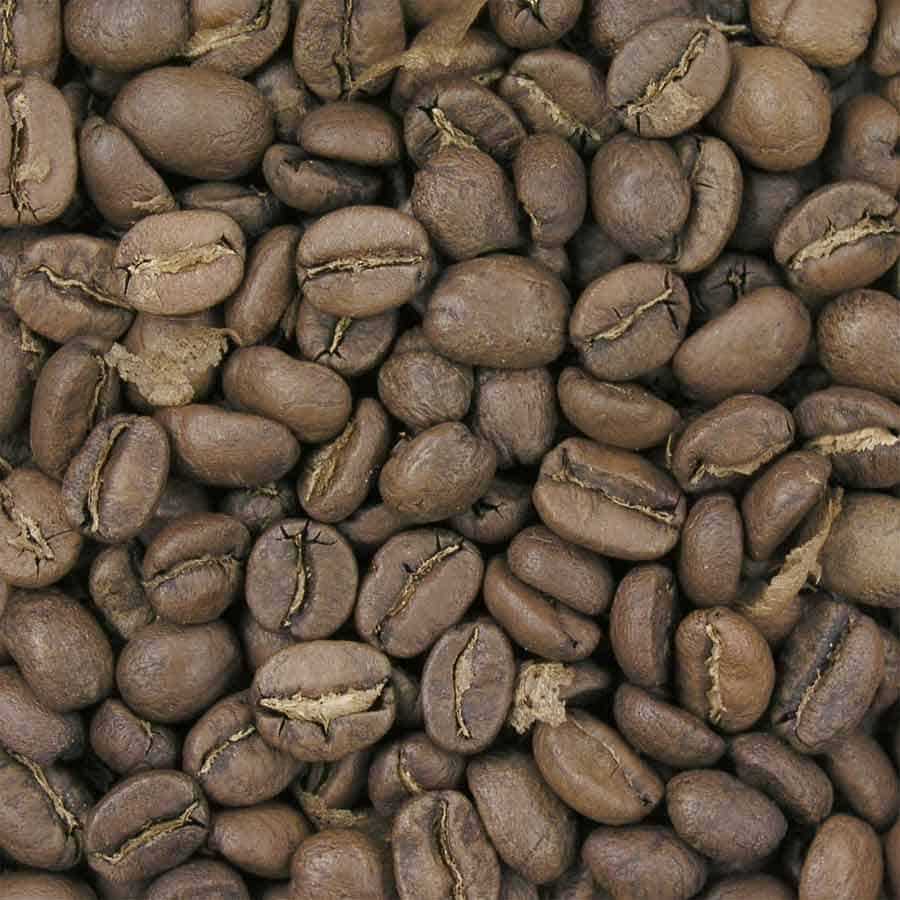
New Orleans Roast
A dark roast, somewhere in the Vienna/French area. But don’t be surprised if it is prepared with roasted chicory, too. This is historically the way New Orleans Style coffee is prepared. You can thank Napoleon’s blockade of New Orleans in the early 1800s for starting the trend. Coffee from Brazil could not make it to port, so the citizens made their coffee stretch with the addition of the roasted root of the endive plant. It’s not awful.
Regular Roast
Much like the American Roast, this is the traditional roast you will find in the North East United States. Although, since it is not the most specific of descriptions, on the West Coast you will find that it is more like Full City.
Spanish Roast
Shhh… it’s the same as Italian Roast. Maybe just a touch darker. Don’t tell.
Turkish Roast
This is even beyond an Italian Roast. You can barely tell that it is coffee and if you are not careful, it will catch on fire in the roaster. In the end, it is almost charcoal.
Vienna Roast
Coffee roasted to 446°F (230°C) earns this distinction. It is darker than the traditional American Roast and lighter than French Roast. Done properly, you will get lovely oils on the beans which contribute mightily to the taste in the cup. I find it smooth in taste, with less acidity. In my opinion, this is just when the roast characteristics kick in. In this way, it improves the quality of the cup but does not overwhelm the tastes inherent in the coffee itself. Some might just call it a Medium-Dark Roast.
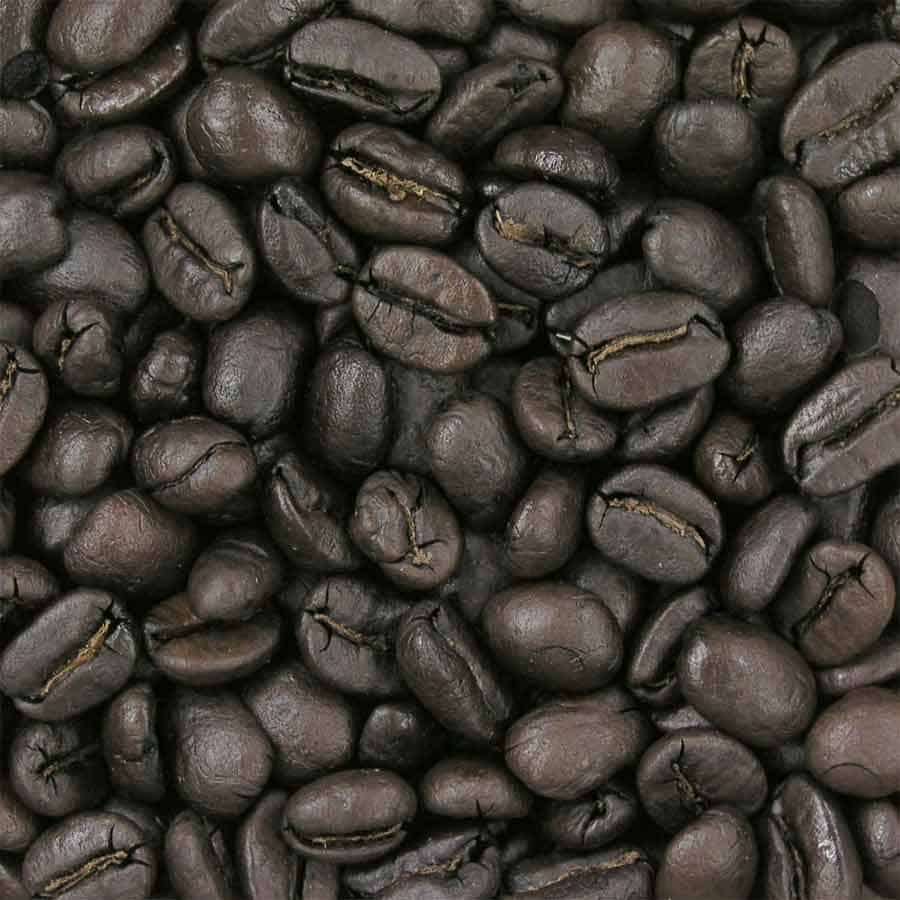
Fun Fact
Vienna Roast is sometimes used to signify a mixture of dark and medium roasted beans in the same package. I can see how this might be a taste someone would go for. You get the “roasty” taste from the dark beans to go along with the characteristics of the coffee in the lighter beans. You also get a lighter-bodied cup with lower acidity. It’s not a taste I’m chasing, but hey, to each his own.
Wrap Up
You would think that finding out how coffee was roasted would be easy. And in some respects, it is. The problems only start when people use vague and non-standard terms for their roasts. Hopefully, this guide has cleared some things up for you. Now you know your Vienna Roast from your French Roast.
Roasts Are Subjective
Keep in mind that roasts can be subjective and your mileage may vary. For instance, Starbucks uses the terms Light, Medium, and Dark to identify its roasts and they are more like Medium, Medium+, and Dark. Another point to remember is that coffees have “sweet spots;” roasting ranges where the flavors when brewed are enhanced. The coffee from my farm in Kona tasted best between Full City and Vienna (which I marketed as Light Roast and Dark Roast… go figure).
I guess the main point to bring home is that tastes are subjective. Some like it dark and burnt. Some like it so light that it tastes like a freshly mowed lawn. Whatever roast YOU like, get it and drink it. There’s room for all of us in the café.
If information like this about coffee is your thing, along with a few hilarious coffee memes, join me and my procaffeinating friends at in our Procaffeination Facebook Group.
If you would like to be among the first to find out when the book and anything else I come up with is ready (and probably get a discount, on it) sign up for the email list at Procaffeination | Putting it off until after you’ve had a cup. No spam… promise.
